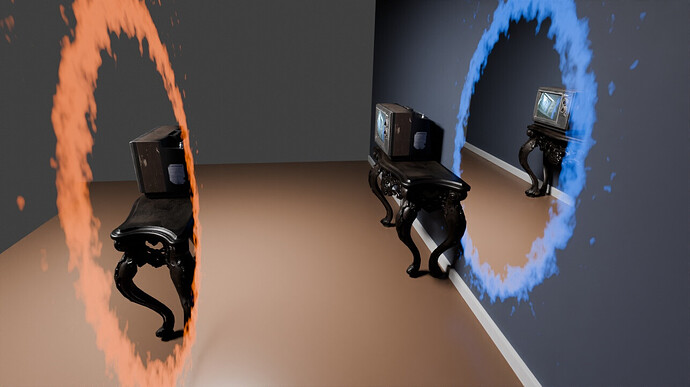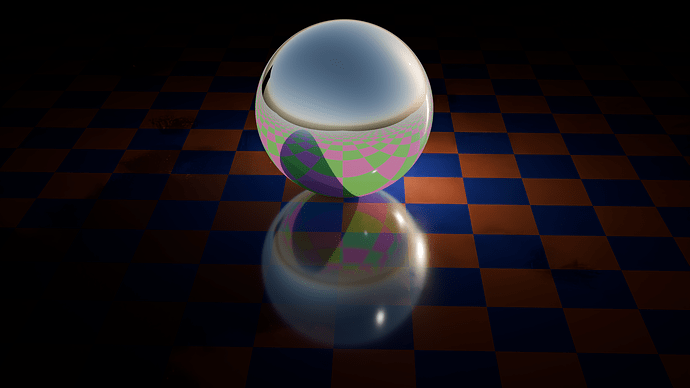I’m not sure how much Weizhen still worked on it. She said she’d get to it eventually. But yeah, ReStir is definitely shinier at the moment and, like, fair enough. I definitely am still hoping for Spectral tho.
Unrelated, I now tried the portals myself. It seems to be rendering surprisingly slowly (maybe I’m missing something or maybe this setup just is more difficult than I imagine it to be) but
In this render, there are two planes that are identical except for their colors. They are 100m apart. One of them also has a stronger light source than the other. But the sphere in the center of one plane “looks like” it’s sitting on the other, and vice-versa!
I wonder how hard it would be to just do this in general?
Like, give literally all BSDF nodes the outgoing and position inputs?
I think that’d mean you could also do this for, say, glossy reflections and such.
EDIT: I think part of the reason it went so slow is because, effectively, of some sort of Z-fighting? Basically, what I did involved two spheres with mostly identical materials, except 100 BU apart, and both of them had a glossy layer with Fresnel on top, reflecting back the world. And it looks like, the position/direction lined up exactly with the spheres’ surface, they sorta infini-loop-saw their own reflection in themselves. I set to 1024 transparency bounces, so the spheres were just crazy expensive to render.
If you don’t do that, it’s more reasonable.
In this setup, the direction is set to Reflection, so the two spheres reflect each other’s surroundings.
The red and blue plane is enclosed in a completely black cube (you can see it reflected on the left) and there is no light source inside, except for the sphere itself.
It seems like sampling goes a bit weird though. This was with 4096 samples but certain points got really strangely undersampled, which causes artefacts in this denoised version
EDIT2:
It’s probably not really easy to tell but in this setup I attempted to do something like this:
It’s not the exact same, but the way it works is, the dome looks at the position of the sphere at its center, and the sphere looks at someplace else. So I’m using two portals together for this.
Due to the dome’s geometry, that someplace else ends up looking distorted (see Suzanne’s shape)
You can also see the dome’s own image in the distance, projected inside itself.
Also, I wanted a full view so this is a mirror ball perspective camera
EDIT3: Perhaps a slightly better realization:










